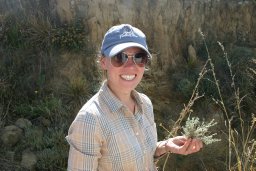|
Dr Kelsey Glennon, Principal Investigator
I'm an evolutionary biologist interested in processes that generate new species and maintain trait variation within populations. I use a combination of field work, population & molecular genetics, and greenhouse experiments to address my research questions. Through my research, I've been fortunate to work both across the Eastern Seaboard of the US and, now, across South Africa. I spend most of my summers in the Drakensberg of South Africa or traveling around the country (& globe) with my daughter & my husband. I'm a New Jersey girl, born and bred, and in 2005 I earned my Bachelors of Science in Biology from Salisbury University in Maryland, USA. I went on to finish my PhD in 2010 at the George Washington University advised by Dr Sheri Church, now of Global Wildlife Conservation. I was an NSF Bioinformatics Postdoc at Syracuse University until 2012, co-advised by Mark Ritchie and Kari Segraves. I started my time at Wits as a Carnegie Postdoctoral Fellow with the Global Change and Sustainability Research Institute, hosted by Prof Glynis Goodman-Cron. I joined the School of Animal, Plant & Environmental Sciences at Wits in 2015 as a Lecturer (it's a long ways from Asbury Park!). |
Current Students:

Promise Mtileni (Hons, MSc) – I was born and raised in Limpopo province in a small village called Jamela, which I believe has led to my interest on environmental conservation and sustainability, and a love for traveling, seeing beautiful animals and plants, and meeting people from different cultures/backgrounds. My powerful curiosity about the environment has motivated me to pursue a career that will allow me to be involved in several ecological research programmes, while exploring the mysteries of nature. My research interests lie in the field of molecular ecology within botanical sciences to better understand the genetics behind physiological changes plants must undergo to deal with climate change, which is increasingly important for conservation planning and conservation biology. Plant genetics and physiology are two disciplines that I feel are often neglected in sustainability.
My MSc focuses on the environmental variables that facilitate changes in flower colour morphs in the Drakensberg Rhodohypoxis baurii.
My MSc focuses on the environmental variables that facilitate changes in flower colour morphs in the Drakensberg Rhodohypoxis baurii.

Siphosenkosi Mbonani (MSc, with distinction, now embarking on a PhD) – I hold a Bachelor of Science degree from Rhodes University in Grahamstown majoring in Biochemistry and Microbiology, I took up an NRF-funded internship in 2015 with the Biological Control Research group at the University of the Witwatersrand under the supervision of Prof Marcus Byrne. This is where my passion and enthusiasm for Biological control of Alien Invasive Plants grew; I thereafter completed an Honours degree with the same research group in 2016. I recently completed my Masters investigating the molecular ecology and population genetics of the invasive Opuntia engelmannii (O. engelmannii), or small round-leaved prickly pear, a succulent invasive shrub that was introduced to South Africa as an ornamental plant more than 350 years ago. This research investigated genetic variation (if any) between five lineages of the O. engelmannii in South Africa and Kenya. Molecular and population genetic investigations indicate whether the five lineages of O. engelmannii found in Africa are in fact one species or if they are different taxa under one name (paper coming soon!). This research will help with effective biocontrol of the invasive in both countries. I immediately grew an interest for this project as I was able to incorporate my molecular skills that I acquired during my undergrad studies at Rhodes and my ecology skills which I garnered during my post-grad studies at Wits. This project is supervised by Dr Kelsey Glennon and Prof Marcus Byrne.
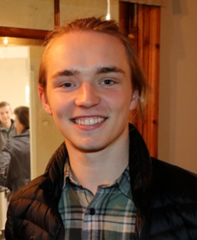
Timothy Hall (MSc) After completing higher level biology and environmental systems and societies in school I knew exactly what I wanted to do at University. Wits has guided me through all levels of science, but the school of Animal, Plant and Environmental sciences is where I’ve settled.
In my honours year, I worked with Prof. Bob Scholes and Prof. Mary Scholes and completed a biodiversity study on a rare forest subtype in KZN, the Pongola Bush. During the field work I realized that ancient trees have a humbling beauty about them. I’ve now been given the opportunity to study one of Africa’s most iconic trees, the baobab. My MSc will look at the population genetics and pollinator-scent interactions of the African baobab (Adansonia digitata L.). I will be assessing pollinator success in transferring genetic material between individuals within populations in Northern Limpopo, South Africa. The baobab’s ecology and its pollinators are susceptible to global change impacts and given they are not only an iconic umbrella species but also a source of income for local communities, understanding their population genetics and reproductive biology is central to conservation efforts. I look forward to the multiple trips into the field studying these trees and working with Prof. Ed Witkowski, Prof. Glynis Goodman-Cron and Dr. Kelsey Glennon.
In my honours year, I worked with Prof. Bob Scholes and Prof. Mary Scholes and completed a biodiversity study on a rare forest subtype in KZN, the Pongola Bush. During the field work I realized that ancient trees have a humbling beauty about them. I’ve now been given the opportunity to study one of Africa’s most iconic trees, the baobab. My MSc will look at the population genetics and pollinator-scent interactions of the African baobab (Adansonia digitata L.). I will be assessing pollinator success in transferring genetic material between individuals within populations in Northern Limpopo, South Africa. The baobab’s ecology and its pollinators are susceptible to global change impacts and given they are not only an iconic umbrella species but also a source of income for local communities, understanding their population genetics and reproductive biology is central to conservation efforts. I look forward to the multiple trips into the field studying these trees and working with Prof. Ed Witkowski, Prof. Glynis Goodman-Cron and Dr. Kelsey Glennon.

Bianca Ferriera (MSc) I have always been inquisitive in the natural world from a young age. I had no clue what I really wanted to study in university but have always have a strong interest in the sciences. I started with a general BSc degree and was lucky enough to have chosen biology as a first year subject, which I fell in love with! In second year, I found my passion for plant sciences and developed a keen interest in biodiversity and evolution. In third year, that combined with a love for systematics and molecular ecology. My research interest now sit deeply in the molecular ecology and evolution world, especially after completing a population genetic and delimitation study on daises (in the genus Senecio) in my honours year, under the supervision of Dr Kelsey Glennon and Prof. Glynis Goodman-Cron. I am very excited to continue my foray into the molecular realm for my MSc, focusing on Rhodohypoxis baurii. Very little research has been conducted on these charming flowers, resulting in massive gaps in knowledge about their reproduction, pollination dynamics, population genetics and evolutionary background (even the origin of the genus is unknown). For my MSc research I will build on previous lab research on Rhodohypoxis baurii and investigate what reproductive strategies exist within Rhodohypoxis baurii and contribute data to delimitate three Rhodohypoxis baurii varieties.
|
Thando Twala (PhD, co-supervised with Dr Jolene Fisher) My research interests include ecological biogeography and ecophysiology of savanna and forest tree species. The aim of my PhD is to investigate and highlight how environmental factors, dispersal and physiology influence the distribution of South African podocarps. This will enable us to understand how South African podocarps are able to persist in their current distribution and to predict how they will respond to climate change.
|

Hendrik Niemann (PhD) – I started my academic career at the University of Johannesburg where I received my BSc in Botany and Biochemistry. During this time, I also interned at the African Centre for DNA Barcoding surrounded by incredibly talented graduate students who became great mentors and friends. This experience made the decision easy to continue my postgraduate studies in Botany and Plant Biotechnology. I went on to receive my BSc hons (with distinction under the supervision of Prof. Ben-Erik Van Wyk and Dr. Nicholas Sadgrove) and more recently my MSc (with distinction supervised by Prof. Michelle van der Bank and Dr. Simeon Bezeng) where my study focused on the development of a DNA barcoding-based identification protocol in collaboration with the Department of Environmental Affairs to aid in the fight against invasive aquatic plants. It was whilst studying invasiveness that I was confronted for the first time by polyploidization and I became fascinated by it. For my PhD at the University of the Witwatersrand (supervised by Dr. Kelsey Glennon) I will be investigating some of the natural processes involved in polyploidization and the role these may have played in the evolution of angiosperm taxa in southern Africa and globally. I am passionate about learning and teaching and I am driven by the opportunity to make a difference and to be of service to the country I love.
NRF interns (& other visitors)

Makoshane Seloane – I completed my MSc at the University of Limpopo. Nature is undoubtedly my academic strength; it has always been an ambition of mine to get close and personal with nature. As an NRF intern in the PEAS lab, I have been helping keep the lab organized, assisted with collecting data on the greenhouse plants so we can know everything about them, and contributed to molecular work that is ongoing in the lab. I have also undertaken a project to evaluate the environmental variables that govern species ranges of taxa within the research group's focus genus, Rhodohypoxis.
Canine Lab Technicians
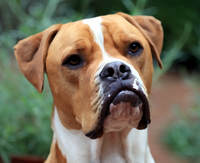
Midas, Chief Puppy Chow Inspector
Midas was a critical member of the lab. He investigated the best practices to maximize puppy chow intake and spent time between the Glennon Lab and the Choiniere Lab.
(Sept 17, 2012–March 2, 2021)
Midas was a critical member of the lab. He investigated the best practices to maximize puppy chow intake and spent time between the Glennon Lab and the Choiniere Lab.
(Sept 17, 2012–March 2, 2021)
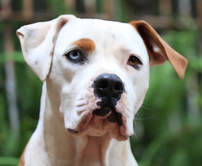
Mella, Senior Stick Sampler
I collect sticks from different tree species around Melville and test the chew-ability of sampled sticks. My current stick collection represents at least six tree species that occur in my neighborhood. I aspire to collect as many sticks as possible to improve my knowledge on which tree species provide the most satisfying chewing sticks.
I collect sticks from different tree species around Melville and test the chew-ability of sampled sticks. My current stick collection represents at least six tree species that occur in my neighborhood. I aspire to collect as many sticks as possible to improve my knowledge on which tree species provide the most satisfying chewing sticks.
Past Students & Postdocs:
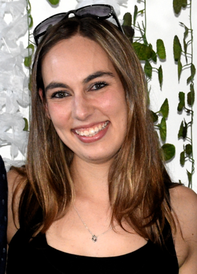
Dr Steph Payne (postdoc) I was born and raised in the City of Johannesburg, South Africa, but have always loved nature and flowers, and found my happy place in 2013 when I could study flowers and their world for my Honours Degree at the School of Animal, Plant and Environmental Sciences, University of the Witwatersrand. I furthered my honours research at WITS, and went on to complete my Masters (2016) and PhD (2019) in bird- and small-mammal pollination (the first quantified record!) of multiple South African Aloe species. I was fascinated by how different flower colours can have an influence on the types of pollinators visiting the plants. This led to my Postdoc in the Glennon Lab (2019-2020), where I focused on the evolution of flower colour across the family Hypoxidaceae. Across the globe, most Hypoxidaceae flowers are white or yellow, but some South African species, such as the Cape Pauridia spp. and Drakensburg Rhodohypoxis spp., are different shades of pink, or have fancy iridescent centres. I examined petal samples from multiple species of Hypoxidaceae, all with different petals colours, ranging from white, to yellow, orange, and pink, and those with iridescent centres, to identify which pigments are responsible for each these colours. These pigments will be mapped onto the Hypoxidaceae phylogeny to see where, when, and how the transition to pink flowers happened in the evolution of the South African species.
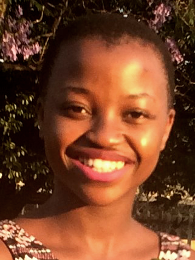
Attang Biyela (MSc) – I was born and raised in KwaZulu-Natal, South Africa. My keen interest in nature and in science led me to pursue a Bachelor of Science in Animal, Plant and Environmental Sciences, which I completed in 2016 at the University of the Witwatersrand. I went on to do my Honours degree in 2017 in which I looked at germination success in crosses between Rhodohypoxis species.
My Masters research focused on reproductive isolation in Rhodohypoxis species, which are near-endemic to the Drakensberg. I am mainly interested in quantifying the strength of reproductive isolation between species in the Rhodohypoxis genus using a combination of molecular genetics and fieldwork. Results from my work will have taxonomic implications, and will add to the pool of knowledge on plant species found in the Drakensberg.
My Masters research focused on reproductive isolation in Rhodohypoxis species, which are near-endemic to the Drakensberg. I am mainly interested in quantifying the strength of reproductive isolation between species in the Rhodohypoxis genus using a combination of molecular genetics and fieldwork. Results from my work will have taxonomic implications, and will add to the pool of knowledge on plant species found in the Drakensberg.
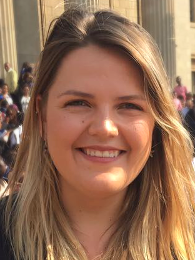
Courtney Gardiner (MSc) – For me, becoming a biologist was a natural choice. From an early age my holidays were spent at the coast, on the mountains and in the bushveld learning about the many different plants and animals and how they interact with one another. This diversity in nature and the complexity between the multitude of different life forms created a deep curiosity about how such things had come to exist.
My Masters project combined aspects of evolutionary biology and molecular ecology. I investigated whether flower colour variation is driven by non-pollinator selection agents such as humidity, temperature and, soil moisture in Rhodohypoxis baurii var. confecat. Confecta is a Drakensberg near-endemic plant and is an ideal system to study the variability of flower colour and how it is maintained within natural populations as it has naturally occurring colour polymorphisms (red, pink, and white) that occur within the same population. I completed both my Bachelors and Honours degrees at the University of the Witwatersrand. I studied a wide variety of topics and for my honours project I focused on the freshwater ecology of the Olifants River. In 2016, I was selected for the Organization for Tropical Studies programme, an intensive 15 week field course that took place in three of South Africa’s national parks.
My Masters project combined aspects of evolutionary biology and molecular ecology. I investigated whether flower colour variation is driven by non-pollinator selection agents such as humidity, temperature and, soil moisture in Rhodohypoxis baurii var. confecat. Confecta is a Drakensberg near-endemic plant and is an ideal system to study the variability of flower colour and how it is maintained within natural populations as it has naturally occurring colour polymorphisms (red, pink, and white) that occur within the same population. I completed both my Bachelors and Honours degrees at the University of the Witwatersrand. I studied a wide variety of topics and for my honours project I focused on the freshwater ecology of the Olifants River. In 2016, I was selected for the Organization for Tropical Studies programme, an intensive 15 week field course that took place in three of South Africa’s national parks.

Anastashia Chetty (MSc, with distinction!) – I have always been passionate about large carnivores, and understanding how patterns and processes of the environment worked – a trend that followed through with my courses and interests (courses in Geology and Biology) during my undergraduate degree. Interested in animal behaviour and ecology, my Honours project focused on ambient conditions affecting cheetah activity patterns, supervised by Dr. Robyn Hetem. My Masters project focused on the ecology and “patterns and processes” interest. My project investigated the reproductive traits (stigma receptivity, nectar volume and secretion rates and timing of pollination) of the African baobab (Adansonia digitata L.) in Vhembe, Limpopo. I compared these traits between trees that produce many fruit and trees that produce few fruit to determine if differences in reproductive traits influence fruit production. The selling of baobab fruit generates income for rural people across Africa. With the demand for baobabs growing commercially, rural villagers may be at risk of losing a source of income. The project was co-supervised by Prof. Ed Witkowski, Prof. Glynis Goodman-Cron and Dr. Kelsey Glennon. The project is funded by the National Research Foundation and Centre of Excellence in Tree Health Biotechnology.
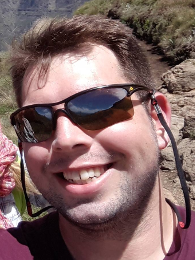
Dylan Beukes (MSc) – I have always had an interest in understanding the natural world and how it works, and pursuing an academic career in ecology has allowed me to sate that curiosity. I am interested in the dynamics of ecosystems and how they will respond to changing global conditions. My previous research (BSc Hons, University of the Witwatersrand, 2014) investigated the effects of smoke on the germination of grass seeds, adding to understanding of how grasses have adapted to fire disturbance. My interest in how evolution and adaptation work within the frame of ecosystem dynamics led me to my present work (MSc, University of the Witwatersrand, 2017-, co-supervised with Prof Sally Archibald), incorporating the ecosystem process of grazing and its effects on plants, as well as adaptability and evolution of the species. I investigated the effects of grazing on the morphology and genetic diversity of the flowering herb Rhodohypoxis baurii var. platypetala in the Drakensberg. Grazing may drive variation as plants adapt to grazing, leading to directional selection which may cause variation to increase to the point where the genetic dynamics of the species are greatly altered. This may place these populations at risk when other environmental changes occur. I hope to understand if grazing is driving variation and how it affects the genetic diversity of populations, as this is key to predicting their adaptability.

Portia Kgaboesele (MSc, with distinction!) – I am an MSc candidate in Evolutionary Biology since May 2016, co-supervised by Prof. Glynis Cron and Dr. Kelsey Glennon. My research interests include systematics and the reproduction biology of the Drakensberg endemic plants and invasive weeds. My current project aims at investigating ecological speciation through habitat heterogeneity and pollinators in the Drakensberg Alpine Centre (DAC) near-endemic genus, Killickia. This project include both field-based experiments such as pollinator exclusion trials and molecular genetics. This study is a part of a bigger one that aims at investigating the diversification of the DAC flora at large. I earned my Bachelor of Science degree in Zoology & Ecology, Environment and Conservation in 2013 and an Honours degree in Ecology, Environment and Conservation in 2014, both from Wits University. As part of my Honours studies, I investigated the mode of reproduction in the pompom weed, a highly invasive weed in South-Africa.
Philani Mhlongo (2016, BSc Hons) – Philani characterized the flavonoid content between diploids and hexaploids of Helichrysum odoratissimum. Philani is now undertaking studies in medicine. Co-supervised with Dr Ida Risinga
Tumisang Mahapa (2016, BSc Hons) – Tumi spent long hours measuring stomata to test whether stomata would be indicative of different ploidies in Helichrysum odoratissimum.
Michelle Mahove (2016-2017, MSc, in Resources and Conservation Biology) – Michelle is testing the use of novel methods to identify areas of paleo- and neo-endemism in South Africa. She's focusing on the large plant genus Helichrysum and the smaller, charismatic chameleon genus, Bradypodion. co-supervised with Prof. Glynis Goodman-Cron.
Tasneem Variawa (2016) MSc with Distinction, in Resources and Conservation Biology) – Tasneem is using species distribution modeling and abundance data to predict potential areas for conservation of the habitat specific aloe, K. plicatilis. co-supervised with Prof Ed Witkowski (Wits) and Stephen Cousins.
Patricia Marsh– (2016-2017, MSc Environmental Sciences) – Patricia is characterizing trends in temperature and precipitation over the last few decades between alpine and sub-alpine areas in the Drakensberg to predict what the future might hold for endemic plants. co-supervised with Prof G. Goodman-Cron and Prof S. Grab.
Ester Nangolo (2015-2016, MSc)– Ester investigated fruit and seed characteristics between producer (fruiting) and poor-producing (barely fruiting) baobab trees. co-supervised with Prof Goodman-Cron, and Prof Witkowski
Oska Matji (2014-2015, MSc)– Oska tested whether , co-supervised with Prof. Goodman-Cron
Ronie Tivakudze (2012-2013, MSc with Distinction) –graduated 2013 with distinction, Ronie tested genetic structuring and inbreeding patterns between fruiting and non-fruiting baobab trees in the Venda region of South Africa. co-supervised with Prof. Goodman-Cron and Prof. Witkowski
Tumisang Mahapa (2016, BSc Hons) – Tumi spent long hours measuring stomata to test whether stomata would be indicative of different ploidies in Helichrysum odoratissimum.
Michelle Mahove (2016-2017, MSc, in Resources and Conservation Biology) – Michelle is testing the use of novel methods to identify areas of paleo- and neo-endemism in South Africa. She's focusing on the large plant genus Helichrysum and the smaller, charismatic chameleon genus, Bradypodion. co-supervised with Prof. Glynis Goodman-Cron.
Tasneem Variawa (2016) MSc with Distinction, in Resources and Conservation Biology) – Tasneem is using species distribution modeling and abundance data to predict potential areas for conservation of the habitat specific aloe, K. plicatilis. co-supervised with Prof Ed Witkowski (Wits) and Stephen Cousins.
Patricia Marsh– (2016-2017, MSc Environmental Sciences) – Patricia is characterizing trends in temperature and precipitation over the last few decades between alpine and sub-alpine areas in the Drakensberg to predict what the future might hold for endemic plants. co-supervised with Prof G. Goodman-Cron and Prof S. Grab.
Ester Nangolo (2015-2016, MSc)– Ester investigated fruit and seed characteristics between producer (fruiting) and poor-producing (barely fruiting) baobab trees. co-supervised with Prof Goodman-Cron, and Prof Witkowski
Oska Matji (2014-2015, MSc)– Oska tested whether , co-supervised with Prof. Goodman-Cron
Ronie Tivakudze (2012-2013, MSc with Distinction) –graduated 2013 with distinction, Ronie tested genetic structuring and inbreeding patterns between fruiting and non-fruiting baobab trees in the Venda region of South Africa. co-supervised with Prof. Goodman-Cron and Prof. Witkowski
